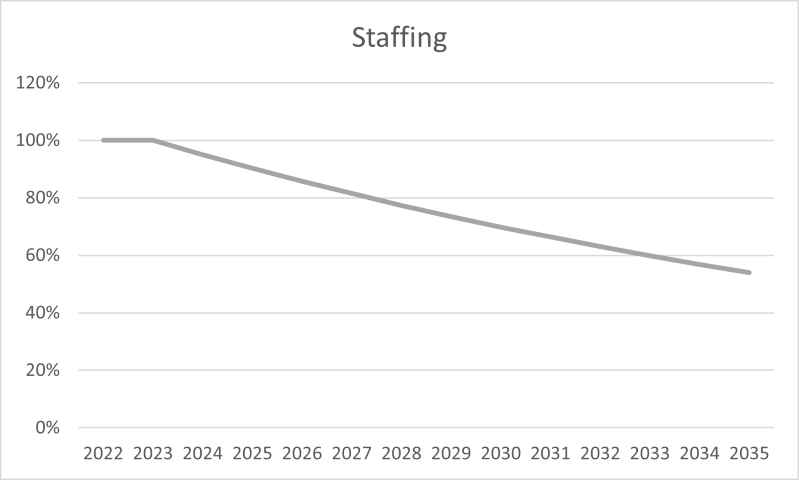Estimating the Percentage of Labor Savings Through AI for the Average Worker
June 1, 2023
Introduction
Artificial Intelligence (AI) has gained prominence in recent years as a technology capable of augmenting human productivity and efficiency. Many industries are increasingly leveraging AI and automation to optimize work processes, streamline operations, and reduce manual labor. While this trend is largely seen as beneficial, it’s crucial to quantify its impacts. One important consideration is the percentage of labor savings that AI can represent for the average worker. However, this estimation is complex, given the heterogeneity of job roles, sectors, and the level of AI adoption.
AI and Labor Savings
AI can save labor in multiple ways, such as through automation of routine tasks, enhancing decision-making processes, and facilitating efficient resource management. For instance, AI tools can automate data entry, customer service, and even complex tasks like financial auditing, providing significant labor savings. Furthermore, AI can augment human intelligence, assisting workers in making informed decisions faster, leading to efficiency gains. Hence, AI can help workers spend less time on repetitive tasks and more on high-value activities.
Estimating the Percentage of Labor Savings
Estimating the exact percentage of labor savings AI can offer for the average worker is challenging due to several factors:
-
Variability in AI Adoption: Different sectors adopt AI technologies at varying rates, and the impact on labor savings is proportional to the level of adoption. For instance, sectors like manufacturing and logistics have adopted AI and automation extensively, while others like healthcare and education are relatively slower in adopting AI.
-
Variability in Roles and Tasks: The impact of AI on labor savings also depends on the nature of the job role. Routine and repetitive tasks are more prone to automation, whereas jobs requiring complex problem-solving, creativity, and human interaction are less likely to be automated.
-
Evolution of Job Roles: As AI technologies advance, job roles evolve. Many workers need to adapt and reskill, often leading to a transition towards tasks that AI cannot yet automate. This dynamic nature of job roles makes it difficult to estimate long-term labor savings.
Nevertheless, studies and surveys provide some estimates. According to a report by McKinsey Global Institute, about 60% of all jobs have at least 30% of activities that could be automated. In terms of labor savings, this suggests a significant potential. However, this does not directly translate into labor savings as the implementation of AI and automation might require additional tasks such as monitoring, maintenance, and decision-making based on AI outputs.
Potential Labor Savings
Considering the McKinsey report and further studies, an estimated range of labor savings could be proposed. For job roles with a high degree of repetitive and predictable tasks, AI could save between 20% and 50% of labor time. For roles that involve complex decision-making, creativity, and high-level human interaction, the labor savings might range from 5% to 15%.
On average, considering a mix of job roles across various sectors, it’s reasonable to estimate that AI could lead to labor savings of around 20% to 30%. It’s worth noting that these figures are estimates and will likely vary widely depending on the specific circumstances.
The 3x3 Institute has developed a model to estimate the percentage of labor savings for the average worker and company.

Conclusion
AI presents considerable opportunities for labor savings, which can lead to increased productivity and economic growth. However, its impact is variable and largely depends on the nature of the job and the level of AI adoption. While it’s challenging to pinpoint an exact percentage of labor savings, current evidence suggests a range between 20% to 30% for the average worker. As AI technology continues to evolve, so too will its impact on labor, necessitating continual research and reassessment.
AIs contributions can be viewed from a variety of perspectives and how society, companies, and individuals. Will AI labor savings contributions result in a:
- Reduction of hours worked without impacting wages?
- Rreduction of hours worked with a proportional reduction in wages?
- Reduction of staff employed?
- Increase in product/service output without impacting wages?